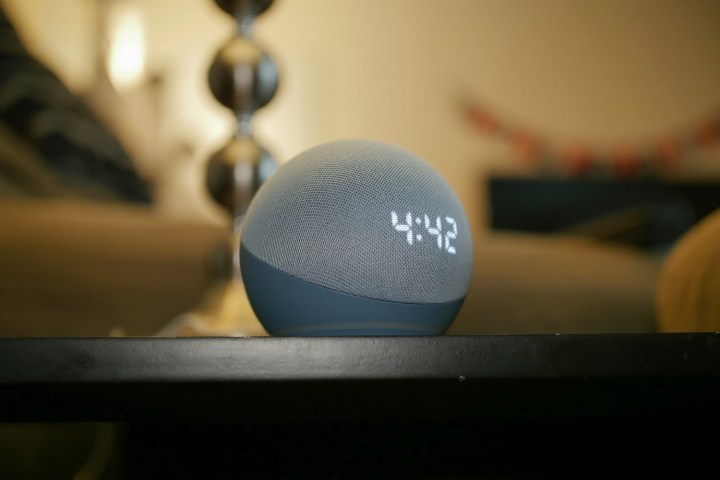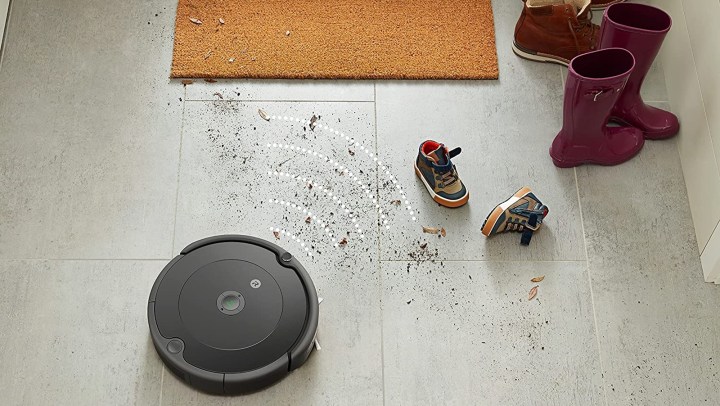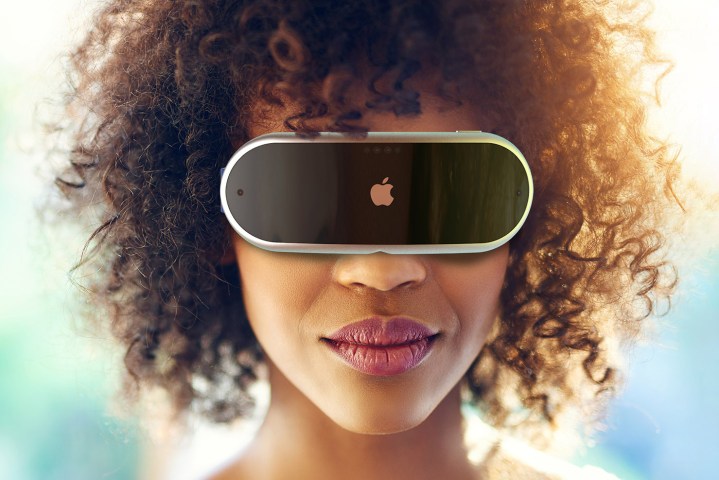It’s the latest water-cooler buzzword that has our heads spinning — the “metaverse.” A surface-level skimming of the term unlocks a complex universe of modern technology propelled to sci-fi-like proportions. With some of the tallest names in Big Tech announcing their commitment to this next wave of VR-powered living, it stands to reason that the metaverse, however realized or un-realized it may be, is that next digitized horizon that humanity and humanity’s devices have all set sail toward.
- What is the metaverse?
- What does the metaverse mean for smart homes?
- Visually-realized voice assistants
- The next evolution of video and audio calls
- Metaverse mapping for smart home devices
- The darker side of life in the metaverse
- Will smart home developers start shifting focus?
- You can check out anytime you like, but why leave?
But what if we told you that the metaverse has actually been around for longer than most of us think (albeit in much more primitive forms)? Since Facebook (now Meta) CEO Mark Zuckerberg has been building blueprints for Meta’s future based on the company’s intentions to massively expand what fragments of the metaverse currently exist, we’ve all been thinking a lot more about living our lives through a VR headset.
The reality: Yes, it seems the metaverse is here to stay — although when and if certain expansions of this digital world will take place (and how successful these implementations will be) remains to be seen. But as smart home devotees, the rise of the metaverse has some of us staring around our homesteads at all of the web-connected devices that make our lives easier, organized, and definitely more entertaining, wondering what the rollout of the Big M will mean for the future of our Echo Shows and Roomba vacuums.
We have a few ideas of what a metaverse-powered future might look like for many of the smart home devices we know and love — with both good and not-so-good premonitions to share. But before we dive deeper into the next generation and beyond, perhaps it’s best to get a quick refresh on the fundamentals of the metaverse as it stands right now.
What is the metaverse?

In a nutshell, the metaverse is a VR-driven server space powered by the good ol’ internet and designed to be inhabited by a myriad of avatars — the digitized “extensions” of human being participants the world over. Sound familiar?
The near-limitless sandbox world of online gaming has had its toes dipped in the metaverse waters for some time. In a manner of speaking, any video game — and especially those built to host a web-powered multiplayer community — could be considered its own self-contained metaverse. Games like Fortnite, Minecraft, and World of Warcraft all spring to mind when talking about games engineered around the idea of community.
In these MMORPG microcosms, human participants (represented by playable avatars) line into a virtual world, one where overall game progress is tethered to interacting with other players to accomplish tasks, push the story along, and increase player stats. Whether you play for just a single hour or 18, when you’re finished, the player “unplugs” from the digital playground to return to the many obligations of everyday life.
The towering names behind the expansion of the metaverse, from Meta to Microsoft, Nvidia, and Apple, view the rollout of increased reliance on the metaverse in much broader terms than the bubble universes of video games. Instead, these companies want users lined into a virtual world (represented by avatars) to actually carry out many of those daily-life things we have to disconnect to complete.
This could be anything from attending a work meeting to taking a class — fully-realized 3D spaces where VR body motions and avatar lip-syncing are perfectly coordinated to match the real-life actions of the user. On a more personal level, it could be a next-generation video call with friends or family (more on that below). You could also walk around a metaverse marketplace to purchase certain goods and services — both for your online world and your actual home.
What does the metaverse mean for smart homes?

Over the last several years, smart home technology has begun to proliferate the world of consumer tech, giving us new and advanced ways to use web-connected products to enrich our lives. From smart speakers and displays to door locks, cameras, thermostats, and robot vacuums, these are devices designed to assist.
Whether it’s a helping hand with weekly cleaning, the ability to remotely unlock a door instead of fishing for keys, or the simple question of “what day is today?” that we utter to Alexa, Google Assistant, or Siri, smart home products offer intuitive ways to stay on top of our lives. We can also use them to interact with friends and family, entertain ourselves and others with things like music-streaming and games, and as a way to buy all kinds of things online.
Sound a bit like what the future of the metaverse is set for? Does that mean that a furthered metaverse will spell the end of the Internet of Things (IoT) ecosystem you spent years investing in? Not necessarily; at least, not in our opinion.
In fact, below we’ve outlined several ways in which expanded metaverse spaces could potentially enhance and evolve the smart home as we know it. But like any idealized future, there’s also the potential for things to go not-so-greatly. We’ve outlined that version of events below, too.
Visually-realized voice assistants

Imagine a world where Alexa and Google Assistant aren’t simply relegated to voiceovers but are fully-modeled, interactive avatars (like the non-playable characters of the gaming world) that you can socialize with in all-new ways.
As the idea behind most metaverse advancements is tied to the usage of VR and augmented reality (AR) technologies, let’s pretend we’re hooked up to whatever VR gear is necessary at the time for these features to work.
Picture yourself on any normal morning.
You emerge from bed, hazy and ill-prepared for the day ahead. You also know you’ve got a ton to do on this particular day but can’t peg down exactly what the schedule looks like. So, you reach over to the bedside table, slap on your headset, and mutter, “Good morning, Alexa.”
With just those three words, the bedroom you see through your VR lenses is suddenly transformed. The “real” Alexa magically emerges at the foot of the bed, along with a holographic breakdown of your calendar notifications and various to-dos.
Appearing in the top-right corner of your metaverse-powered headset are the headlines of the day from your favorite news network, with the volume muted because part of your Alexa wake-up Routine involves your assistant gesturing to your various daily tasks while narrating their order of importance. Oh, and because Alexa has always been customizable, Amazon’s metaverse assistance interface allows you to choose from several Alexa avatars. So, of course, your version of Alexa is a talking horse.
It’s not to hard imagine one of these popular voice assistants receiving some kind of visual upgrade, and perhaps one day the need for any kind of speaker or display could be negated entirely. But as we prepare for the first waves of bigger meta-versing to hit, smart speakers and displays could still be used as the gateways to visual assistance.
Think of it like a Philips Hue hub. Sure, you can control various elements of your smart lights without the add-on network module, but many Hue users will account for the cost of this item upfront — simply because you can’t do everything you can do with a Hue system until you have one. The same could be true for the first years of metaverse assistants and smart hubs. Sure, you may be able to finally shake hands with Alexa, but you’ll still need an Echo Dot to do so.
The next evolution of video and audio calls

Smart home devices provide us with a number of ways to keep in touch with friends and family. The best part? In most cases, we don’t even have to step outside of our own homes. With features like Amazon’s Drop In and video calling with Google Hub and Facebook Portal hardware, smart home device owners can sit in front of an interactive display (some will even follow you around the room) to have a fireside chat with Uncle Joe, Aunt Jane, or any other loved one.
Now, imagine being able to tap into the powers of the metaverse-meets-smart-home handshake to take these remote calls to the next level. If the next wave of VR immersion has anything to suggest, we could be looking at revolutionary virtual firesides that combine elements of reality with augmentation.
What does such jargon look like in practice? Theoretically, some of our smart home devices could serve as gateways for avatar versions of ourselves to inhabit the real-world environments of loved ones — and vice versa. Instead of video calls being limited to what we see on our touchscreens, we could semi-physically plant ourselves on grandma’s couch — the “semi” reflecting the digitized version of our likeness that our family member (equipped with their own VR headset) is able to interact with.
And like the Alexa example above, that avatar doesn’t necessarily have to exhibit a human form either. After all, grandma always said you ate like a horse — now she gets to talk to you as a horse (we’re not sure who gets punished more in that example).
On a serious note though, an infusion of metaverse into the smart-socialization cake could mean big things for smart home features like Alexa and Google Assistant’s Ask My Buddy skill. For those unaware, Ask My Buddy allows Alexa and Google Assistant device owners to build a Personal Alert Network of contacts to ping in the event of an emergency. An especially helpful tool for elderly device owners, the addition of visual metaverse elements could be a game-changer here.
Let’s say you receive a buddy alert from a family member’s Alexa device. You check in, learning that a loved one has fallen down. After calling 9-1-1 (or using Ask My Buddy to do so), you then throw on your VR headset, where you’re able to take a look around your family member’s home. If the fallen family member has the strength and wherewithal, they could even locate and wear their own VR headset to see your avatar sitting down next to them until emergency services arrive. A big comfort by way of big tech.
The above example assumes that both users (the Ask My Buddy host and the Personal Alert contact) own and operate smart home devices that would allow this kind of interaction. But as the metaverse becomes further realized, someday we may not even need particular hardware (including headsets) to appear and communicate holographically.
Metaverse mapping for smart home devices

Even when dialed into a virtual world, life beyond our VR headsets is still here. Just because we’re walking around digital marketplaces with an avatar of our choosing doesn’t mean that the temperature in our home should be neglected. The same goes for our daily robot vac cleanups and at-home workout. But while we’re plugged into an interactive virtual world, how will we be able to keep up with the smart home gear in our actual houses?
It’s not far-fetched to think that elements of our personal metaverse won’t be customizable. Similar to how we customize and manage our smart homes through an array of assistant and device apps, our go-to smart home devices could be controllable through personalized device mapping within the metaverse itself.

Here’s an example: VR headset powered on, your avatar self wanders around a virtual clothing outlet. That’s when you realize, “Dang, it’s chilly.” But instead of having to grab your phone to open your smart thermostat app or commanding Alexa to adjust the temperature, you can simply pull up a metaverse widget that you’ve linked to your actual in-home smart thermostat. With just a few in-air hand gestures, you’ve successfully raised the temperature in the house and can continue shopping.
Carry this same ideology to other parts of the smart home, where mapping of your IoT ecosystem can be easily relegated to virtual world widgets — allowing you to continue managing the vital parts of your smart home while visiting the metaverse.
Better yet, these may not be the typical widgets we’re accustomed to from our mobile devices. Maybe in the metaverse, you can actually see your robot vac in a viewable and interactive onscreen inventory — similar to an items system in a video game. Selecting the vacuum then brings up a series of available commands, including start/stop, recharge, battery status, tank capacity, and more.
The darker side of life in the metaverse
Oh, the metaverse. Or is it a metaverse? With so much unclear (including how to properly refer to the mighty M-word) about this revolutionary way of using our Wi-Fi to socialize, work, go to school, and buy stuff, there’s bountiful room to speculate about the good and bad implications that this cutting-edge world brings. Which leads us to the less savory side of the metaverse-meets-smart home handshake.
Will smart home developers start shifting focus?

If tech companies start curbing all of their development toward the metaverse, what will happen to smart home devices as we know them now? Will companies stop making them altogether, with the focus instead shifting to bringing smart home elements into virtual spaces?
As it stands, anything is possible for the foreseeable future. It’s almost impossible to guess exactly how far the metaverse will carry us into (or whisk us away from) the next wave of smart home platforming. For now, though, it’s probably safe to assume our go-to smart speakers and robot vacs are far from total extinction.
You can check out anytime you like, but why leave?
Imagine the absolute best version of the metaverse, operating at peak performance: That’s billions of users using VR and AR principles to shop, work, self-educate, entertain, and interact, all from the comfort of home. Oh, and we’re also able to control everything in our smart homes while moving around in the metaverse.
With that being said, is there really much of a reason to disconnect, especially with everything we could possibly need being virtually accessible — which, in a majority of cases, will result in something being physically carried out in the real world (think of the smart thermostat being adjusted)? When you think of things in these terms, the future of the metaverse takes on a more dystopian tone. Even a quick Google search reveals a number of publications guessing at the many downfalls that the metaverse will bring.
Let’s not pretend there won’t be a bad side to the expanded concept of the metaverse — there will be. Hackers and other malcontents will figure out how to break and manipulate it, companies will use it to figure out all-new ways to monetize our lives and livelihoods, and users will definitely use the metaverse too much. But let’s return to the example of video games.
All of those aforementioned omens are ill-founded fates that have befallen many the video game player, some more than others. Yet, there still exists an overwhelming majority of gamers who plug in, play, and un-plug, utilizing the online gaming environment for what they need it for while gaming and properly disconnecting once they’ve finished gaming for the day.
So, as the Big M continues to proliferate headlines, rally investors, and jostle the world of consumer tech, all we (and our smart homes) can do for the time being is buckle up, hang on tight, and hope for the very best as tech does what tech does best — change.



